July 27, 2017
National Parks of the Colorado Plateau
National Parks of the Colorado Plateau
Known as the “Grand Circle” of national parks, the colorado plateau region of the U.S. is one of the world’s great concentrations of outstanding natural and cultural features. These parks will fill you with wonder and – if you don’t already love the national parks – one scenic air tour to any of these will be enough to have you traveling to parks your whole life.
Arches National Park
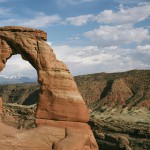
Arches contains some of the country’s most amazing natural wonders—mammoth rocks and arches formed from erosion. Perhaps one of the most important facts about Arches is that the park is constantly evolving. In the past 18 years, two major collapses have occurred: A major piece of Landscape Arch in 1991, and Wall Arch in 2008. Both serve as reminders that these structures will not last forever—all the more reason to visit soon.
Canyonlands National Park
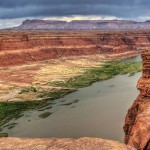
In this geological wonderland, rocks, spires, and mesas dominate the heart of the Colorado Plateau cut by canyons of the Green and Colorado rivers. Petroglyphs left by Indians hundreds of years ago are also present. The Colorado and Green rivers divide the park into four districts: the Island in the Sky, the Needles, the Maze, and the rivers themselves. While the districts share a primitive desert atmosphere, each retains its own character and offers different opportunities for exploration and the study of natural and cultural history.
Capitol Reef National Park
The 241,904-acre park in south-central Utah draws more than half a million visitors per year. It protects the Waterpocket Fold, a 100-mile long warp in the Earth’s crust, as well as the unique historical and cultural history of the area.
Dolores River
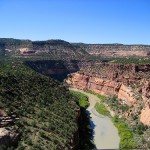
The Dolores River is a tributary of the Colorado River, approximately 250 mi (402 km) long, in the U.S. states of Colorado and Utah. It rises in southwestern Colorado near Dolores Peak and Mount Wilson in the San Miguel Mountains. It flows southwest, past the town of Dolores, where it turns, flowing north and northwest. It flows through the Dolores River Canyon, then cuts across Paradox Valley before receiving the San Miguel River (incidentally, both the Dolores and the San Miguel have their headwaters to either side of Lizard Head Pass) in Montrose County and crossing into Utah, where it joins the Colorado in Grand County near the former Dewey Bridge.
Lizard Head Wilderness Area
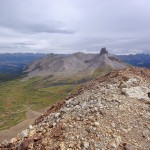
Named for a prominent spire near Lizard Head Pass, this area contains the westernmost 14,000-foot peaks in Colorado. Located in the San Juan Mountain, these fourteeners provide much of the recreational allure of the area, but they are not for the fainthearted. Mount Wilson and El Diente (“the tooth”) post two of the most difficult climbs in the state; the exposed knife-edged ridge that connects the peaks can cause an apoplectic reaction among acrophobics. Many visitors to Lizard Head Wilderness are drawn to the magnificent unbroken expanses of aspen draping the area’s lower slopes. To top it off, the elegant form of Dolores Peak stands like a silent sentinel, one of the last peaks of the San Juans before the Rockies fade into the arid, desiccated canyons of the Colorado Plateau.
Lake Powell
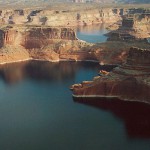
Lake Powell was created in 1963 when the Glen Canyon Dam held back the waters of the Colorado River, forming a vast blue lake surrounded by beautiful sandstone walls. Remarkably, it took 17 years for the lake to fill the canyon to the high water mark (3700′ above sea level), giving America its second largest man-made lake – and a playground like no place else on earth. Lake Powell is arguably the most scenic lake in America, situated in some of Southern Utah’s finest red-rock desert country.
Mesa Verde National Park
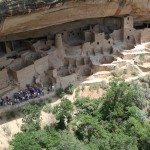
Mesa Verde, Spanish for green table, offers a spectacular look into the lives of the Ancestral Pueblo people who made it their home for over 700 years, from A.D. 600 to 1300. Today the park protects nearly 5,000 known archeological sites, including 600 cliff dwellings. These sites are some of the most notable and best preserved in the United States.
Monument Valley
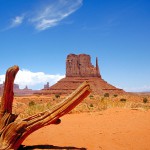 Monument Valley is perhaps the most famous example of the classic American West landscape, located within the Navajo Nation on the border of Arizona and Utah. The valley has been the backdrop for numerous western movies, ranging from the films of John Wayne to Back to the Future 3 and Forrest Gump.
Monument Valley is perhaps the most famous example of the classic American West landscape, located within the Navajo Nation on the border of Arizona and Utah. The valley has been the backdrop for numerous western movies, ranging from the films of John Wayne to Back to the Future 3 and Forrest Gump.
Tags:
